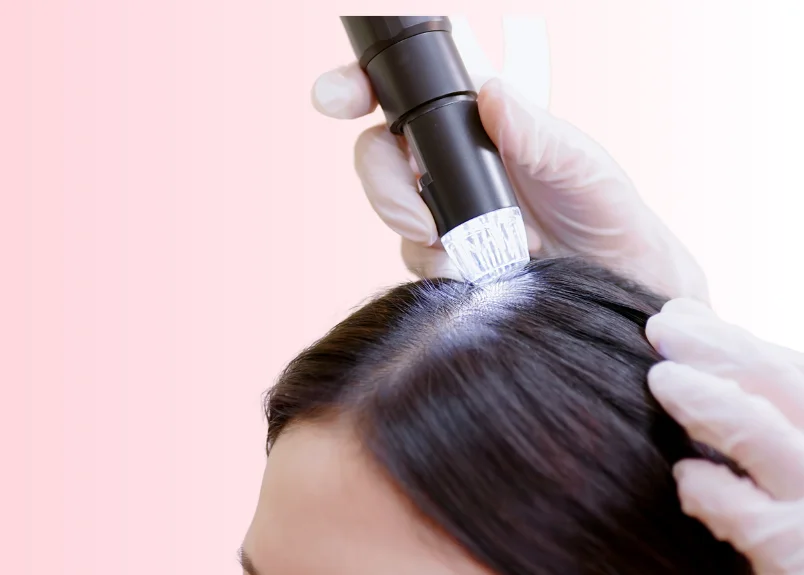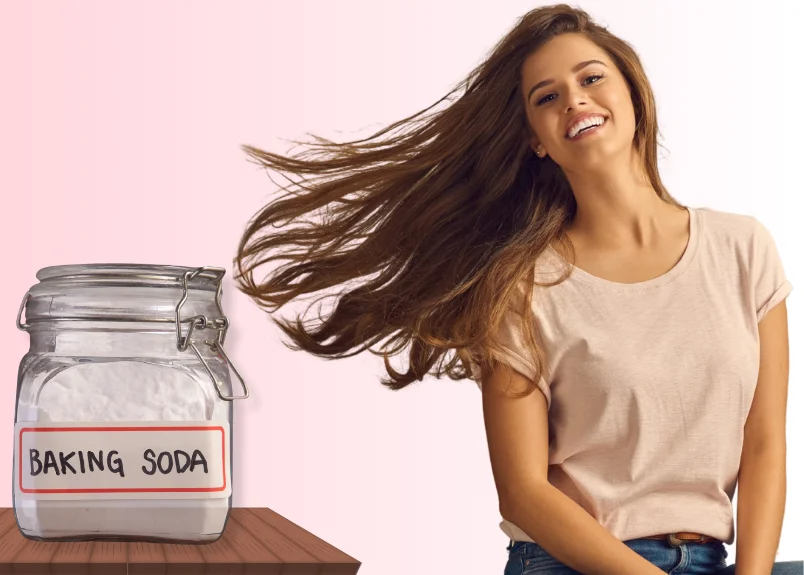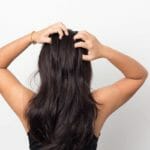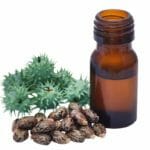Hack or Hype?: Can baking soda be used as dry shampoo?
At BeautyCaters, our expert team independently curates every recommended product. Purchases through our links may earn us a commission. Explore our transparent selection process.
We’ve all heard the buzz about baking soda as a dry shampoo, but can this kitchen staple truly banish oil and revive lifeless locks? “Can baking soda be used as dry shampoo?” Let’s know all about it-it’s oil-absorbing powers, hacks how to use it and it’s potential drawbacks.

The fundamentals of baking soda as dry shampoo
To truly understand the wonders of baking soda as a dry shampoo, it’s crucial to delve into its fundamental aspects. By exploring its chemical composition and comprehending why it’s commonly used, you’ll gain a deeper appreciation of this versatile household ingredient.
The chemical composition of baking soda
Behind the simplicity of baking soda lies its complex chemical composition. Baking soda, scientifically known as sodium bicarbonate, consists of sodium, hydrogen, carbon, and oxygen ions. This unique combination grants baking soda its alkaline properties, making it an effective solution for various cleaning and odor-absorbing purposes. When used as a dry shampoo, the alkalinity helps to combat grease and refresh your hair.
Why use baking soda as dry shampoo?
Now, you might be wondering why one would consider using baking soda as a dry shampoo in the first place. The reasons are aplenty, and they can be attributed to the remarkable properties of this household staple.
- Firstly, baking soda is a natural absorbent, making it excellent at soaking up excess oil and grease from your scalp, instantly revitalizing your hair.
- Secondly, it eliminates unpleasant odors by neutralizing acidic compounds, leaving your hair smelling fresh and clean.
- Finally, its mild exfoliating properties gently remove dirt and product buildup without stripping away essential oils, keeping your scalp balanced and healthy.
The DIY baking soda dry shampoo recipe

Ingredients:
- Baking soda: 2 tablespoons
- Optional ingredients: cornstarch (1 tablespoon) or cocoa powder (1 tablespoon) for darker hair to avoid the white cast
- An empty, clean container with a lid for storage
Method:
Mix the baking soda with any optional ingredients you’d like to include. If you’re using cornstarch, adjust the measurements accordingly. Once you’ve achieved a well-blended mixture, transfer it to the container for easy access and storage.
How to use baking soda dry shampoo?
Now that your baking soda dry shampoo is ready, let’s talk about how to use the powder effectively. Here are some guidelines to ensure optimal results:
- Apply it correctly: Start by sectioning your hair and lightly sprinkling the baking soda dry shampoo powder directly onto your scalp. Focus on the roots, as that’s where oils tend to accumulate the most. Use your fingertips to massage the dry shampoo into your scalp.
- Let it sit: Allow the baking soda dry shampoo to sit for a few minutes, giving it time to absorb excess oils and refresh your hair.
- Brush or comb it out: After letting it sit, use a brush or comb to remove any residue. This step will help distribute the dry shampoo evenly and restore volume to your hair.

Note: While baking soda can be an effective dry shampoo alternative, it may not be suitable for everyone. Individuals with dry or sensitive scalps should use caution when using baking soda, as it can potentially cause dryness or irritation. If you experience any discomfort, discontinue use immediately. Also, remember that using too much baking soda or using it too frequently may lead to hair dryness and damage.
DIY dry shampoo made of baking soda can be a cost-effective and natural alternative. However, it’s crucial to follow the exact recipe with measurements, and use it in moderation to avoid any potential drawbacks. With these guidelines in mind, you can confidently embark on your journey to fresher-looking hair between washes!
Pros and cons of using baking soda as dry shampoo
Last but not least, let’s delve into the pros and cons of using baking soda as a dry shampoo. As with any hair care product, there are advantages and disadvantages to consider. To give you a clearer understanding, I’ve compiled a list in the following table:
| Advantages | Disadvantages |
| 1. Absorbs excess oil and eliminates greasiness. | 1. Can be drying to the scalp and hair. |
| 2. Affordable and easily accessible. | 2. May leave a white residue on darker hair. |
| 3. Removes odors from the hair. | 3. Potential for scalp irritation. |
| 4. Can add volume and texture to the hair. | 4. Not suitable for all hair types. |
| 5. Environmentally friendly alternative to aerosol dry shampoos. | 5. Requires thorough brushing to remove residue. |
Pros of baking soda dry shampoo
Baking soda as a dry shampoo does have its perks. Firstly, it effectively absorbs excess oil and eliminates greasiness from your hair, making it look fresh and clean. This is particularly beneficial for those busy days when you don’t have time to wash your hair but still want to maintain its appearance. Additionally, baking soda is a wallet-friendly option that is readily available in most households, making it a convenient choice when you’re in a pinch.
Cons and possible side effects
Despite its advantages, there are potential drawbacks and side effects worth considering when using baking soda as a dry shampoo. One issue to be aware of is that baking soda can be drying to both the scalp and hair. This can lead to increased frizziness or brittleness, especially if you have naturally dry or damaged hair.
Furthermore, the white residue left behind by baking soda may be more noticeable on dark hair, requiring extra effort to brush it out thoroughly. It’s also important to note that some individuals may experience scalp irritation when using baking soda as a dry shampoo, so it’s crucial to monitor your skin’s reaction and discontinue use if any discomfort arises. Lastly, baking soda may not be suitable for all hair types, particularly those that are extremely dry or chemically treated.

FAQs about using baking soda as dry shampoo
Can baking soda be used as dry shampoo?
Absolutely Yes! Baking soda acts as a natural oil absorber, making it a great option for a quick refresh between washes. However, it’s important to use it sparingly as it can be drying and potentially irritate the scalp.
How long should I leave baking soda in my hair?
For dry shampoo purposes, you don’t need to leave baking soda on for long. Apply a small amount to your roots, massage gently, and let it sit for a few minutes. Then, brush it out thoroughly to remove any residue.
Is baking soda good for gray hair?
Baking soda can have mixed effects on gray hair. While it may help remove impurities and prevent discoloration, it can also be drying and damage the fragile structure of gray strands. Use it cautiously and consider gentler alternatives for regular care.
Can baking soda lighten hair?
Baking soda on its own won’t lighten hair significantly. However, some online recipes combine it with hydrogen peroxide to create a lightening paste. This approach can be risky and damage your hair. It’s best to consult a professional colorist if you’re looking to lighten your hair safely.
Does baking soda remove hair?
While baking soda has a high pH level that can disrupt hair structure, it’s not a recommended hair removal method. It can cause irritation, breakage, and weaken hair. Consider safer alternatives like shaving or waxing.
Final Word: Can baking soda be used as dry shampoo?
So, the answer to “Can baking soda be used as dry shampoo?” is a resounding yes, with a few caveats. It’s a fantastic natural option for a quick refresh, but keep in mind the potential for scalp irritation and residue. For best results, use it sparingly and consider a store-bought dry shampoo for frequent touch-ups. No matter your choice, embrace the power of a good hair day, naturally!
Perform a small patch test of your scalp before incorporating it into your regular haircare routine.Also, consult with a professional hairstylist or dermatologist for personalized recommendations and advice on the best dry shampoo options for your specific hair type and concerns.










